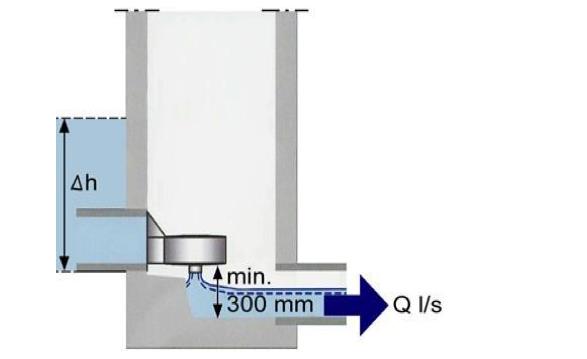Flow regulators
More intense and longer lasting rainfall means that we will have to come up with new ways to ensure that drainage/sewerage systems can cope with the large amounts of water. One possibility is to use flow regulators to control the flow to the sewer system. The water will then have to be stored behind the flow regulator.
Flow regulators function without moving parts and without the need of an energy source. In other words, with only a few means, it is possible to safeguard a sewer system against large volumes of inflow and at the same time even-out the load on the treatment plant.
For drainage regulation in the pipe network, flow regulators are used to detain the water, so that the "unused" pipe volumes that are a common phenomenon during most precipitation events can be utilised. Most often, only individual stretches in the lower part of the system will run full with water during the type of rainfall event used to set the standard for dimensions and capacity, while extra volume is available in the remaining part of the system. Only part of the pipe volume is therefore being utilised during a normal rainfall event.
The flow regulator can be used to control the flow to the sewer from roofs and paved areas, as well as to control the flow in the sewer. According to Mosbæk, the Danish firm behind the flow regulator, costs can be reduced by 30-50%, primarily because flows can be predicted when designing new installations and therefore they can be made with smaller dimensions. Costs in connection with renovation are also reduced, because existing pipes can be reused.

Senest redigeret:
05-02-2014